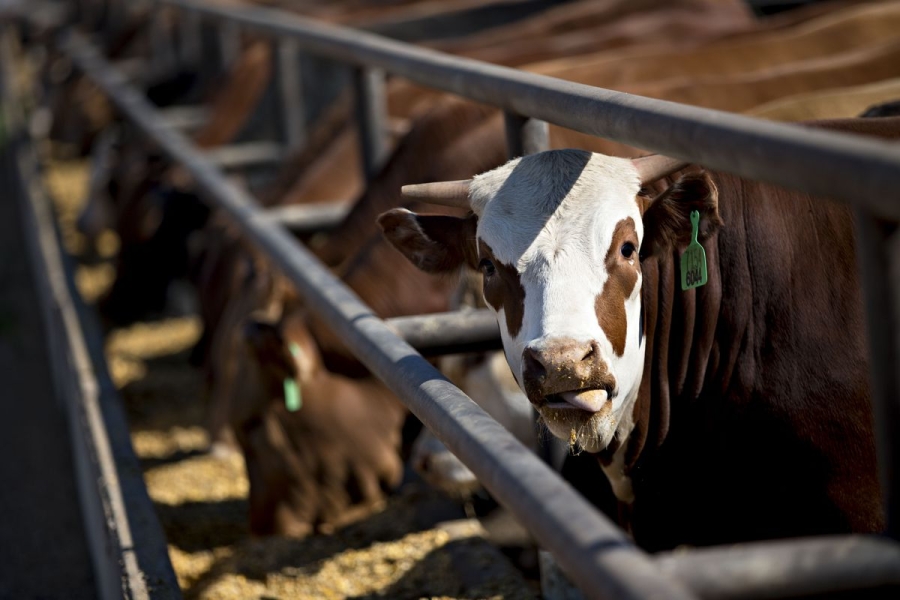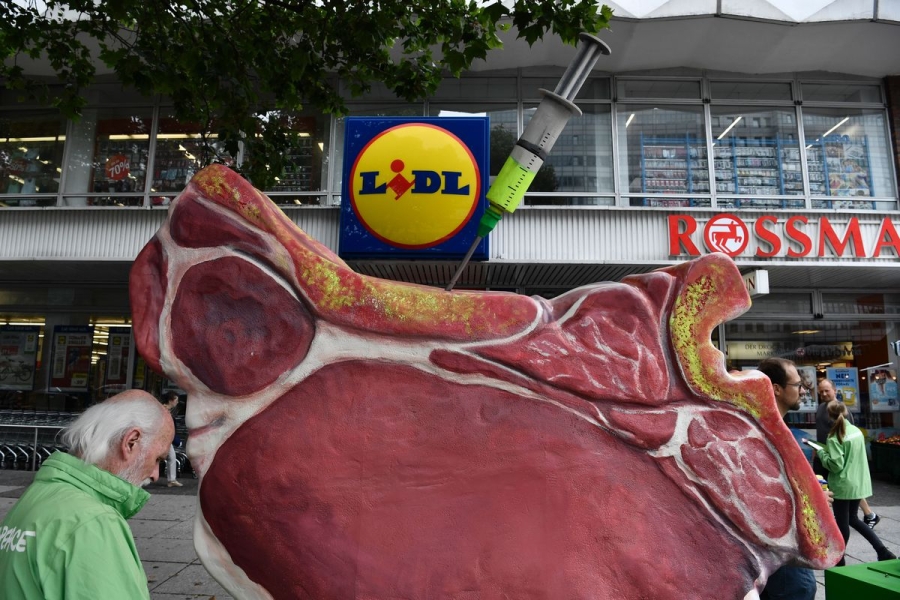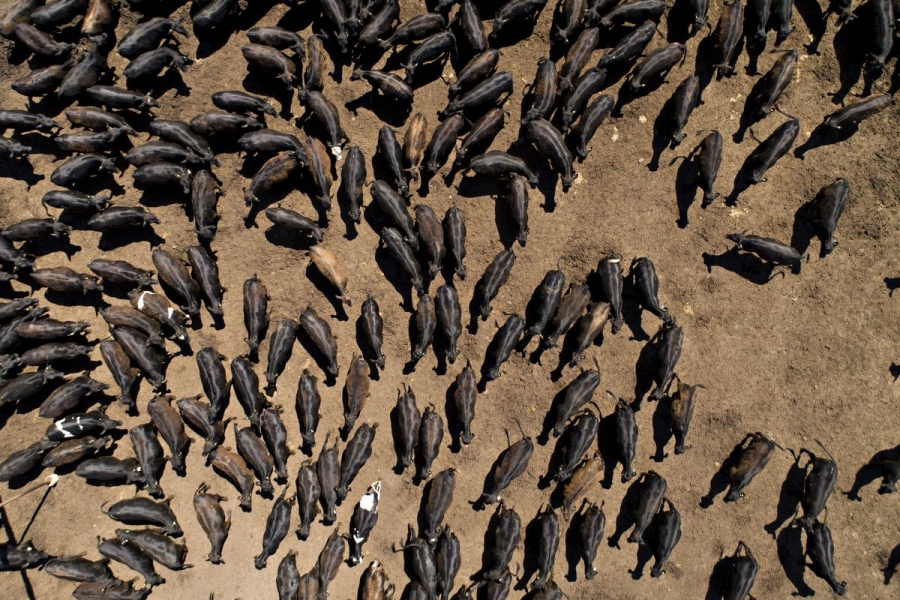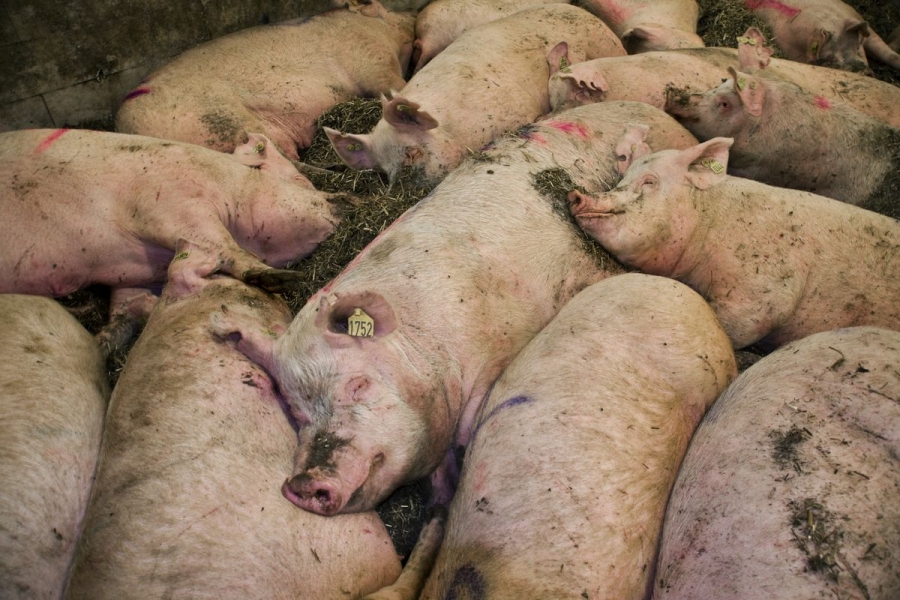Meat production is making lifesaving drugs less effective. Where’s the FDA?

Kenny Torrella is a staff writer for Vox’s Future Perfect section, with a focus on animal welfare and the future of meat.
The US Food and Drug Administration (FDA) knew that America’s meat industry had a drug problem.
For decades, evidence had amassed that the widespread use of antibiotics to make livestock grow faster — and survive the crowded, unsanitary conditions of factory farms — was causing bacteria to mutate and develop resistance to antibiotics used in human medicine.
Over time, once easily treatable human infections, such as urinary tract infections and tuberculosis, became harder or sometimes impossible to treat. A foundational component of modern medicine was starting to crumble. But it wasn’t until the mid-2010s that the FDA finally took the basic steps of requiring farmers to get veterinary prescriptions for antibiotics and banning the use of antibiotics to make animals grow faster — steps that some European regulators had taken a decade or more prior.
Thanks to those two actions alone, sales of medically important antibiotics for livestock plummeted 42 percent from 2015 to 2017. But in a concerning course reversal, antibiotic sales for use in livestock have ticked back up, increasing 12 percent from 2017 to 2022, per a new FDA report. Sales increased 4 percent in 2022 alone.

In 2022, the chicken industry’s antibiotics purchasing slightly declined, but in every other major sector — cattle, pork, and turkey — antibiotic sales rose.
“Antibiotic sales to meat producers continue to increase despite efforts that the FDA has made,” Louis Sokolow, a policy associate with Frontier Group, a public health and sustainability research organization, told Vox. “The status quo of these small increases year over year is not enough to protect people from antibiotic-resistant bacteria.”
According to an analysis published in September by the Natural Resources Defense Council and One Health Trust, medically important antibiotics are increasingly going to livestock instead of humans. In 2017, the meat industry purchased 62 percent of the US supply. By 2020, it rose to 69 percent.
It’s a sobering turn of events with life-and-death implications. In 2019, antibiotic-resistant bacteria directly killed over 1.2 million people globally, including 35,000 Americans, and more than 5 million others across the world died from diseases where antibiotic resistance played a role — far more than the global toll of HIV/AIDS or malaria, leading the World Health Organization to call antibiotic resistance “one of the biggest threats to global health, food security, and development today.”
Public health advocates want to see the FDA take the threat much more seriously, and often point to Europe as a role model. From 2011 to 2022, antibiotic sales for use in livestock fell by more than half across the European Union, and use per animal is now around half that of the US. Last year, the EU implemented perhaps its most significant reform yet: banning the routine use of antibiotics to prevent disease, reserving their use for only when animals are actually sick.

It’s unlikely the FDA will follow in Europe’s footsteps any time soon. Asked about an EU-style ban on preventive use of antibiotics, an FDA spokesperson responded, “The laws in the US and our livestock population are not the same as that of the EU or other countries. The FDA’s initiatives to promote judicious use and reduce AMR [antimicrobial resistance] were devised specifically for the US and the conditions we face with the aim of maximizing effectiveness and cooperation of drug sponsors, veterinarians, and animal producers.”
The FDA and the US food industry have proven that they can make progress on the issue — but to keep antibiotics working, they need to do a lot more. That will require them to tackle beef and pork, two of the more stubborn and complex sectors of America’s meat system that just can’t seem to quit antibiotics, since doing so could demand substantive changes to how animals are farmed for food.
The American antibiotic-free revolution that wasn’t
It wasn’t just the FDA’s new rules that caused antibiotic sales for livestock to plunge in a two-year period — Big Chicken played a part too.
In the early 2000s, the nation’s fourth-largest chicken producer Perdue Farms began efforts to wean its birds off antibiotics, which it achieved in 2016 by changing chickens’ diets and replacing antibiotics with vaccines and probiotics. At first, chicken raised without antibiotics cost 50 percent more, but the company says it has since been able to all but close the cost differential.
In the mid-2010s, while Perdue was making progress, activists leveraged the momentum and successfully convinced McDonald’s to source chicken raised without medically important antibiotics, which contributed to a domino effect in which producers and restaurants made further pledges to reduce antibiotics in poultry.
By 2020, a little over half of America’s 9 billion chickens farmed for meat were raised without antibiotics, according to an industry survey.
The sea change in chicken production demonstrated it was possible to quickly scale down antibiotics in farming, but it didn’t do much to reduce overall use, as the chicken industry only used 6 percent of antibiotics in agriculture in 2016. And the momentum didn’t spread to other parts of the meat business, like beef and pork, which together account for over 80 percent of medically important antibiotics fed to farmed animals.

Some of the lack of progress in beef and pork comes down to the simple fact that pigs and cattle are raised differently than chickens. Chickens are slaughtered at just six or seven weeks old, so the chance they’ll get sick is lower than pigs, who are slaughtered at six months old, or cattle, slaughtered at around three years of age.
The chicken industry is also vertically integrated, meaning a company like Tyson or Perdue controls virtually every link in the supply chain, so making big changes like cutting out antibiotics is easier than in the more decentralized supply chain of beef. For example, the typical steer will change hands several times before slaughter, going from a breeder to pasture grazing to a feedlot, all of which make it harder to coordinate an antibiotic-free regimen. In the last few months of their life cattle are also fed a high-grain diet that they aren’t adapted to digest, which increases the chance they’ll develop a liver abscess, a condition that’s prevented with antibiotics.
The pork sector, like poultry, is also vertically integrated, but the industry has largely opposed animal welfare, environmental, and antibiotic reforms. Antibiotics in pig production shot up 31 percent from 2017 to 2022.
There’s also no pork or beef giant that’s taken the antibiotic-free leap like Perdue did for chicken. That could change in the years ahead: McDonald’s, the world’s largest beef purchaser, announced at the end of 2022 that it plans to reduce antibiotic use in its beef supply chain. However, the announcement didn’t come with a timeline, which worries advocates.
Although voluntary change can move the needle, without regulation, industry has little incentive to make the dramatic reductions needed to safeguard antibiotics. While the FDA has prohibited meat producers from using antibiotics to speed up growth— their original purpose in agriculture — some of the antibiotics that promote growth, like tylosin, are still allowed for disease prevention. Matthew Wellington, formerly of the Public Interest Research Group, or PIRG, told Vox this is a loophole that disincentivizes producers from reducing antibiotics: “Our concern has always been that they’re just putting a different name on the same kind of use, which is a problem.” (This story was originally published in January 2023; Wellington has since left PIRG).

In response to this concern, an FDA spokesperson said, “Veterinarians are on the front lines and as prescribers, they’re in the best position to ensure that both medically important and non-medically important antimicrobials are being used appropriately.”
Aside from outright banning the routine use of medically important antibiotics to prevent disease, PIRG would like to see the FDA take three actions: set a target of reducing antibiotic use by 50 percent by the end of 2025 (based on 2010 levels); publish data on antibiotic use, not just sales; and limit the duration of antibiotic courses for farmed animals.
An FDA spokesperson said specific reduction targets weren’t possible because the agency doesn’t know how many antibiotics farmers are using: “We cannot effectively monitor antimicrobial use without first putting a system in place for determining [a] baseline and assessing trends over time.” The agency right now only collects sales data, and it’s been exploring a voluntary public-private approach to collect and report real-world use data.
Some states haven’t waited on federal regulators: Maryland and California have both restricted the use of antibiotics on farms.
How the Europeans — and some Americans — are quitting antibiotics on the farm
Just because it’s difficult to reduce antibiotics in beef and pork production doesn’t mean it’s impossible, as the story of Iowa pig farmers Tim and Deleana Roseland demonstrates.
In 2005, they switched from raising pigs in the conventional manner — tightly cramped and fed a steady diet of antibiotics — to raising pigs for Niman Ranch, a higher-welfare meat company now owned by Perdue. That required the Roselands to ditch the routine use of antibiotics.
“I was nervous about it at first but as it turned out, it was no big deal whatsoever,” Tim Roseland said. But he added that it wouldn’t have been possible with his old setup: “There’s too much overcrowding, small pens, too many pigs crammed into a little area.”
Their newer system gives each pig more space in larger pens, and bedding that they root through and chew on, instead of, when they’re packed into factory farms, chewing on each other. They also give the pigs more vaccines and feed them probiotics.
And there’s a lot to learn from Denmark, Europe’s second-largest pork producer. From 1992 to 2008, antibiotic use per pig fell by over 50 percent, and while pig mortality went up in the short term, by 2008 it had dropped back to near-1992 levels.

The small country’s transformation wasn’t a matter of rocket science, but a suite of smart management practices: more frequent barn cleaning, better ventilation, later piglet weaning, more space per pig, extra vaccines, and experimenting with feed and additives.
All this comes with difficult tradeoffs: antibiotic-free pork costs more and requires more land, which increases its carbon footprint. But we can’t expect to have cheap meat forever without a cost to public health, an uncomfortable truth that’s led many environmental and public health groups to champion a message of “less but better” meat.
“I think the fact that Denmark, despite very low antibiotic use since 1995, is still one of the biggest pork exporters in the world, already speaks for itself,” said Francesca Chiara, a director at the University of Minnesota’s Center for Infectious Disease Research and Policy.
Given the projected rise of global antibiotic sales for agriculture, Denmark’s example may not be speaking loudly enough. But it’s time we listen — nothing less than the future of human medicine is at stake.
Update, December 15, 2023: This story was originally published in January 2023 and has been updated to reflect new FDA data on medically important antibiotics sales to livestock producers.
Source: vox.com






